Cause & Effects: An effects builder’s guide to getting experimental with guitar pedals
ThorpyFX main man Adrian Thorpe MBE wants you to get out of your effects rut – and he’s gonna show you how…
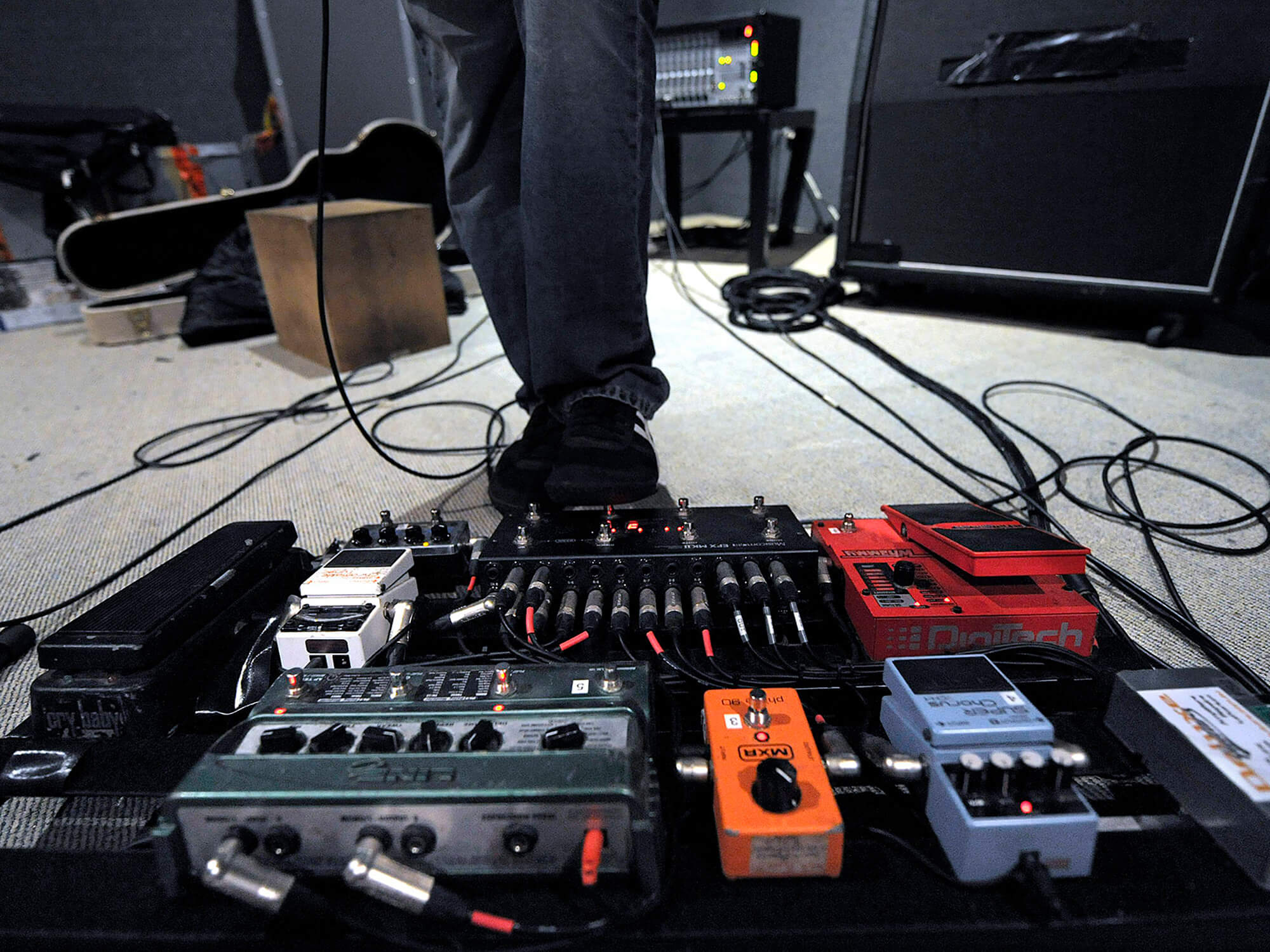
A guitarist operating a rack of guitar effects pedals. Image: Martin Philbey/Redferns via Getty Images
It’s fair to say guitar pedals are my life – I spend my days designing, building, photographing, or imagining guitar pedals. If I’m not doing that, I’m playing them. So, if anyone can get into a rut with them, it’s probably me.
So how do you break out of a rut? The answer is, you experiment, you get crazy, and you do things that you wouldn’t normally approach knowing full well (or at least assuming) you are mostly going to hate 90 per cent of the sounds created.
Of the 10 per cent you do end up liking, you’ll probably only find that 10 per cent of those are actually usable in a real world context, so for all your efforts you’ll have 1 per cent overall yield. It sounds like a lot of work for not much reward, but trust me – that 1 per cent is more than worth it.
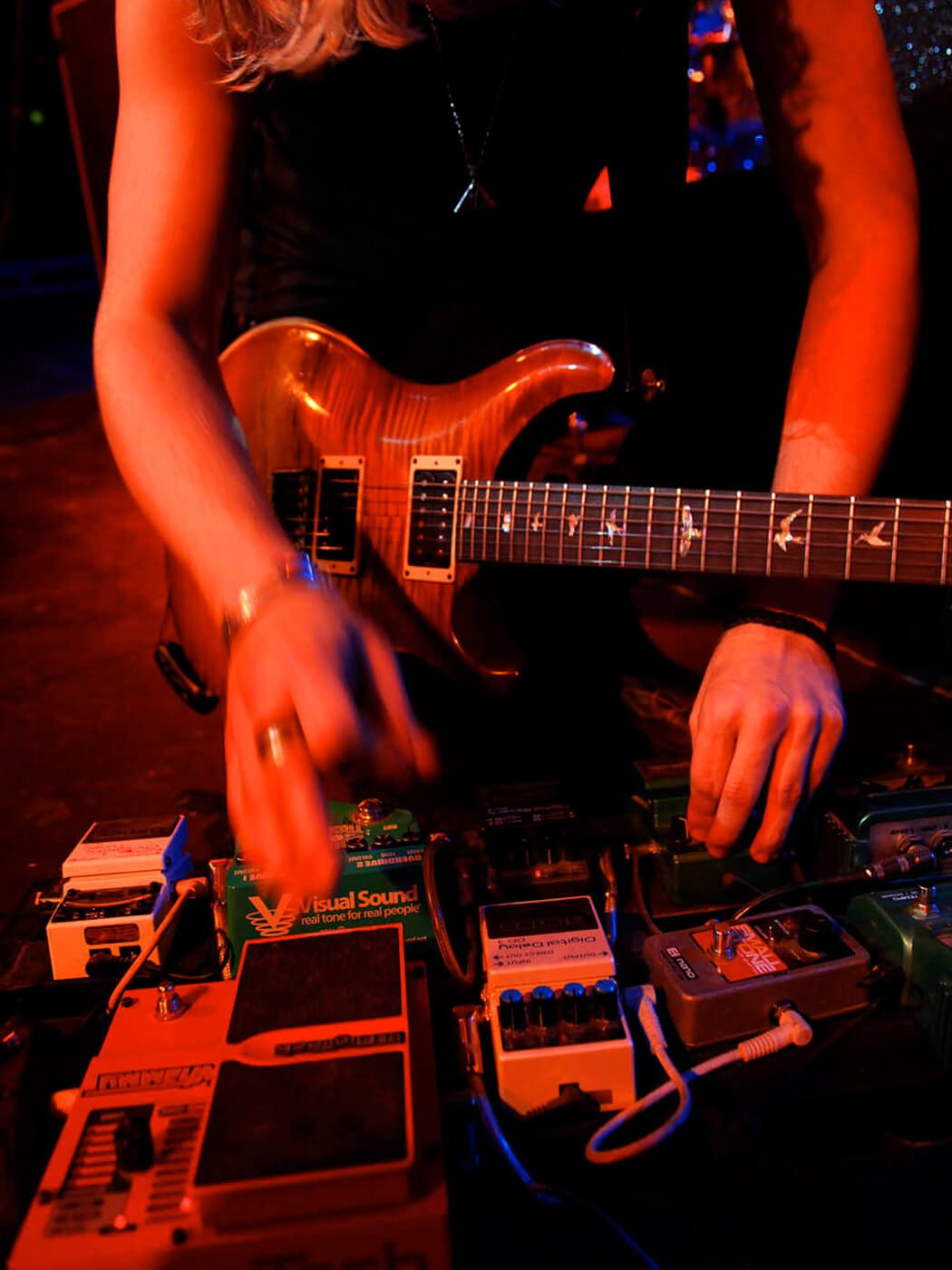
Why should you experiment with guitar pedals?
Besides the rut-breaking, I believe there are several benefits to stepping out of your comfort zone. Guitar playing, like any other hobby or profession can go through peaks and troughs of inspiration and enjoyment, sometimes you are riding the crest of a riff-based wave and other times you are staring at your gear with a blank look on your face.
When you are in the inspiration abyss, just messing about with sounds for the sake of it can spark new ideas. Even if they don’t, you will be learning your pedals, learning your gear in a zero-stress environment with no pressure to produce anything other than to enjoy the task. This can create new sounds, sounds that you can bank for later.
It’s exactly why I believe even the worst sounding, weirdest pedals have a place, they can be used as a different colour or sound layer. If this all sounds a bit arty, I don’t mean it to, it’s just that whenever I’ve experimented with guitar pedals it’s always yielded a lot of crud, but the nuggets of gold that were in the crud were worth all the time and effort.

How should you approach it?
There are probably several ways to do this, but I have a methodology that works for myself, and I’ll share it here. You can use this as a guide or choose to do it your own way entirely. Either way the goal is to create sounds you wouldn’t normally make.
Tools you need: At the very minimum I’d suggest you get a looper of some sort for “on-the-fly” capture of these sounds. This also allows you to mess with the captured riff in real time. The second tool that will be VERY useful is a blend pedal. This will be useful for dropping your captured sounds out of the main mix and behind your guitar playing. I’ll explain this a bit more later.
With these tools in hand, sit on the floor with your guitar and a selection of different pedals, fuzz, modulation, synths, filters, and delays. A pile of patch leads and a power supply to power it all.
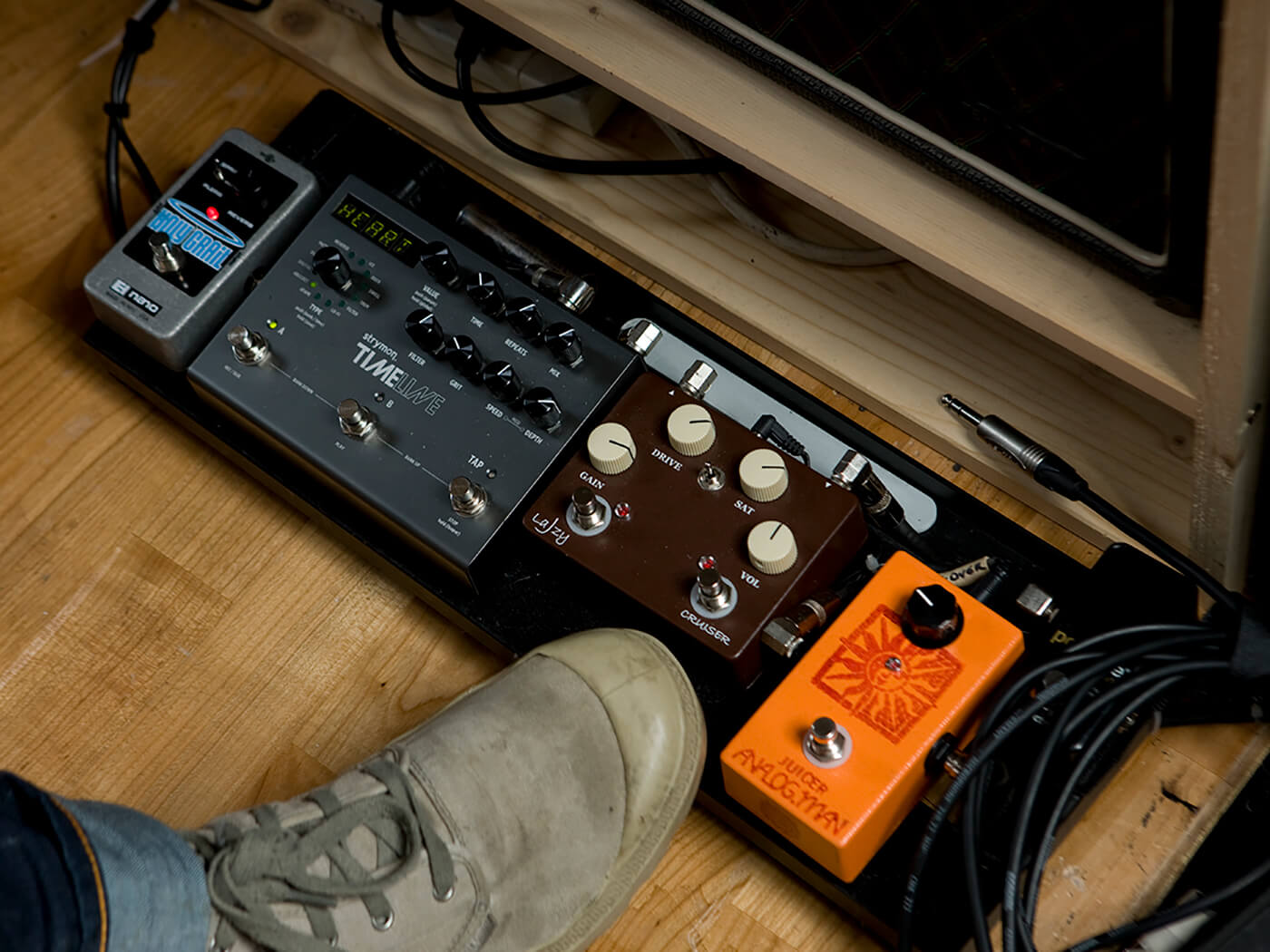
Start subtle, go crazy.
Now you’d think I’d suggest going all in and creating the most mental sounds you possibly can (especially given my “get crazy” comment above). However, I feel subtlety is the order of the day here, at least to begin with. This is because at extreme settings, some pedals can run away and cause huge volume spikes or in some instances the signal just disappears due to pedal design.
For this example, I’ve chosen 3 pedals to mess with, they are a delay, a fuzz, and a phaser. Clearly the more controls your pedals have for adjustment, the easier it will be to get into crazy territory. For the fuzz I went “Velcro” – a gated “spitty” fuzz that was set to still hold a note for a short while before dying abruptly.
For the phaser I set the phasing to be a choppy almost tremolo like setting, depth to the extreme, rate around 120bpm (I also lengthened the available delay time on the phaser and increased the resonance).
Finally, I tried a few things to the delay, one of which was a longer delay time with longer feedback time. This made the delay more noticeable and present. The other idea tried was reverse delay for a totally unnatural sound from the three pedals. I preferred the reverse delay for these purposes, necessarily off the wall.
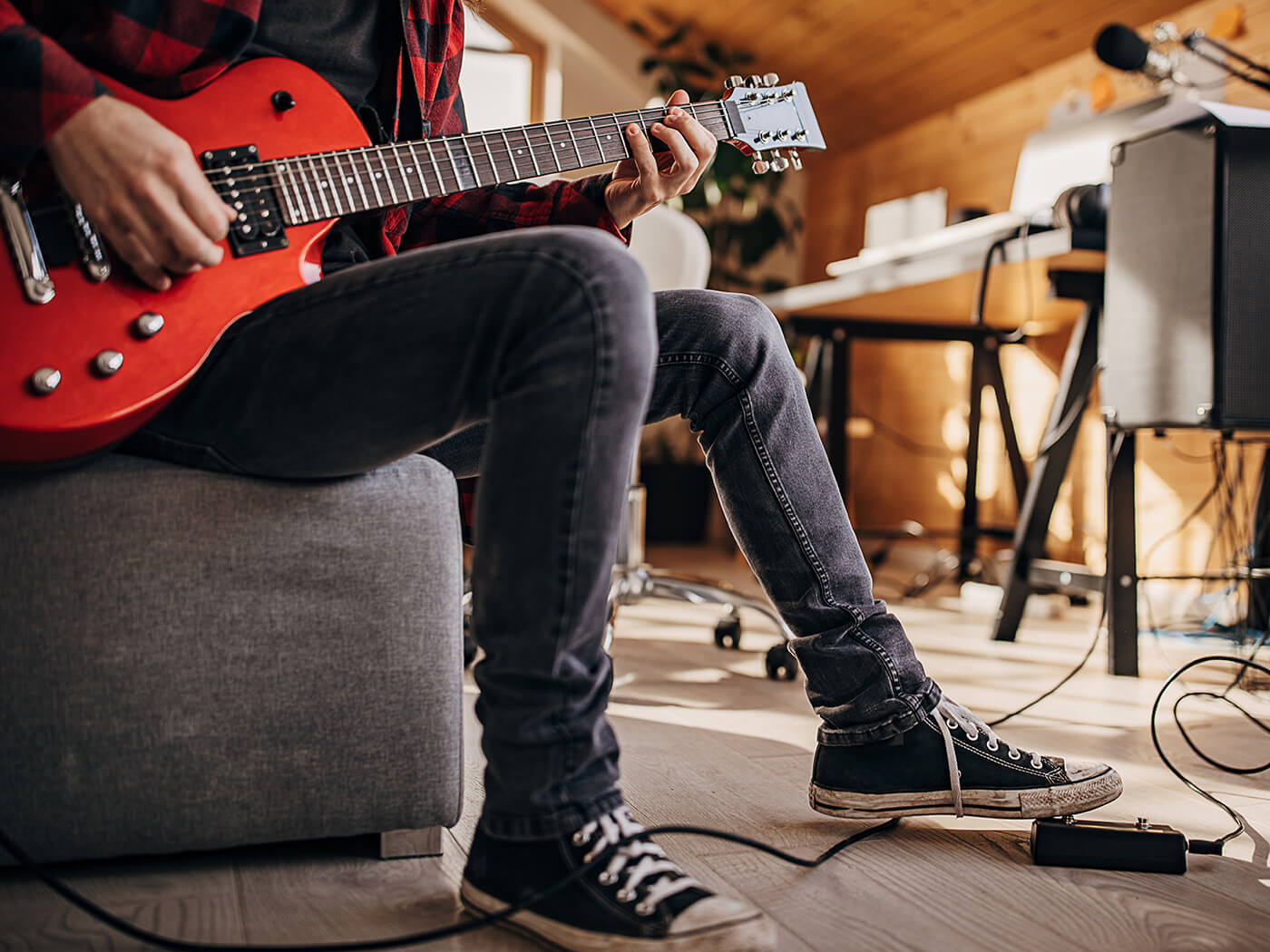
How to implement your newfound chaos.
Once you’ve found the sound you want to use, you must ascertain what style of playing it’ll work with. In the case of the more eclectic noises you might make, it’s best to start with defined single notes, then see if chords and runs work. In lots of cases, single notes are likely the most musical thing you can get out of the signal chain.
The blend pedal is the real trick to implementing these sounds. This should be a dry/wet blend pedal and you place the whole of the signal chain for getting these sounds in the wet portion of the blend pedal. I personally like to start 100 per cent wet and feed the dry in until I am happy with the overall balance.
Once this has been achieved you can essentially tame even the most extreme sounds with a balance of normal vs crazy. It’s sometimes preferable to even have the crazy portion set at only 10 per cent of your overall sound, operating as an interesting shimmer to your playing. Either way, only you will know what balance to give and essentially whatever you like is the right answer.
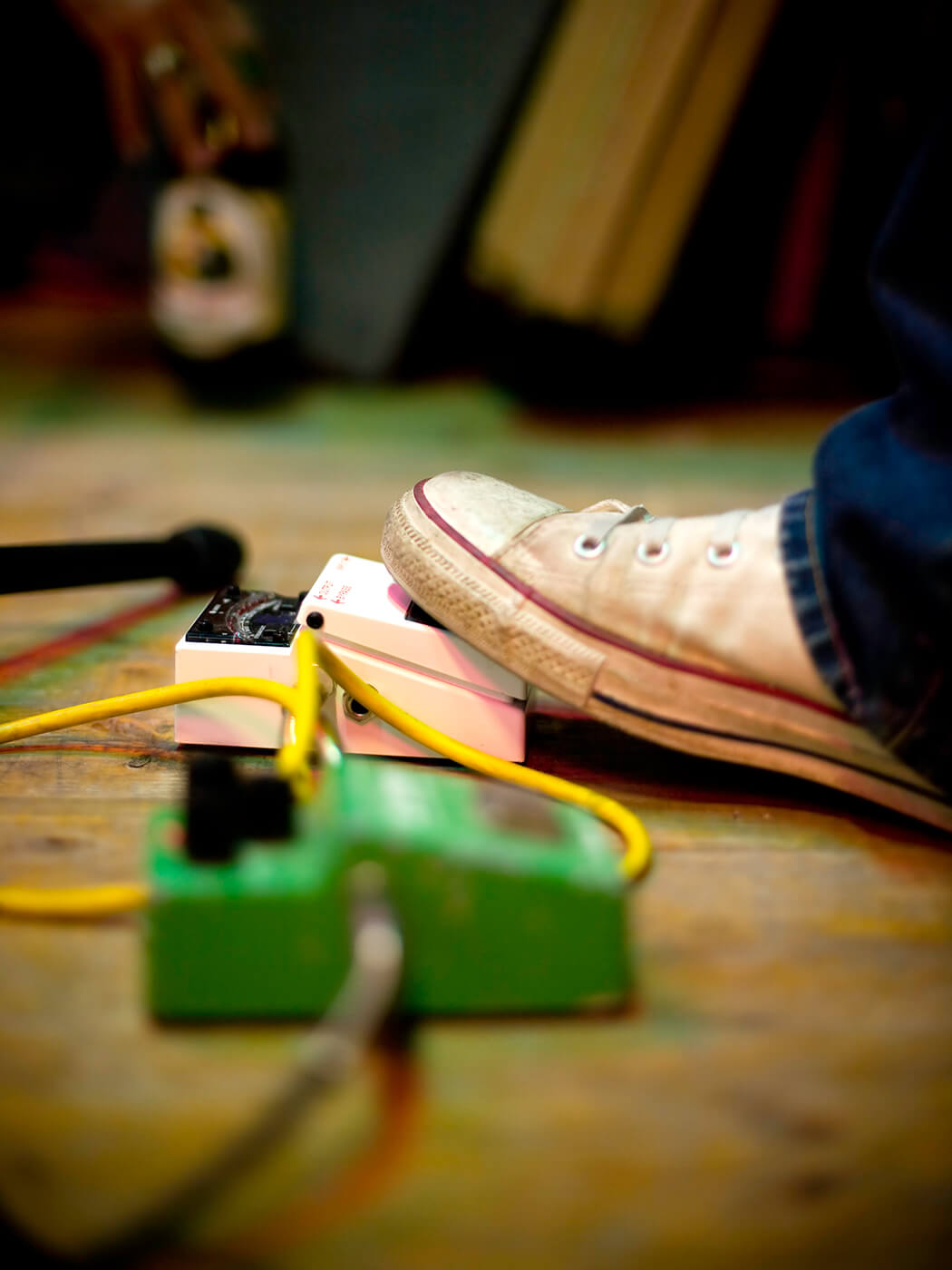
Remember, it’s not a binary choice
This isn’t an all or nothing proposition, you should treat pedals as colours for your palette and use them in whatever proportions you need to be inspired. Even if you achieve nothing, it’ll be a fun session of experimentation.
